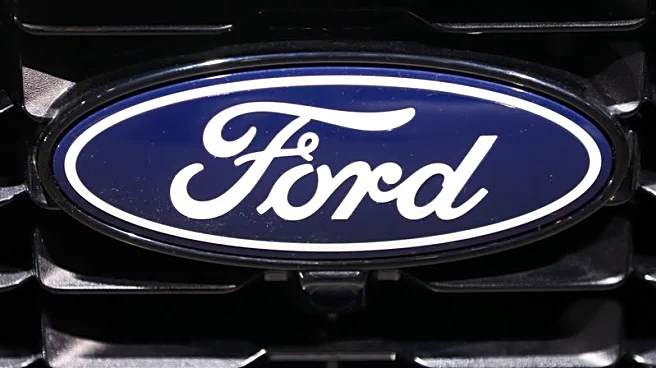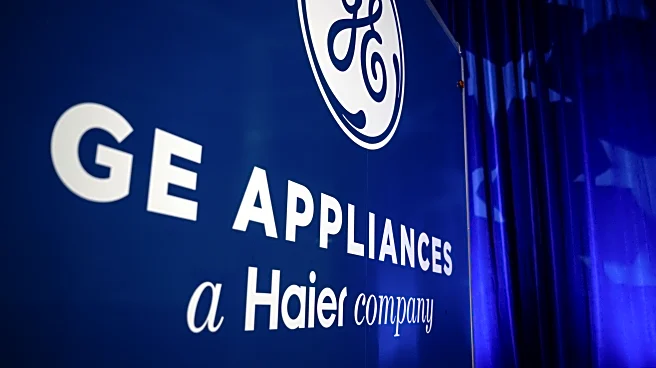What's Happening?
General Motors (GM) has announced a significant investment of $550 million aimed at expanding its U.S. vehicle production capabilities by 2027. This investment will be directed towards two key components
plants located in Michigan and Ohio. Specifically, GM plans to allocate approximately $300 million to its Romulus, Michigan propulsion plant, which is responsible for manufacturing V-6 engines and 10-speed transmissions. The expansion will enhance the plant's transmission production capacity, supporting GM's broader strategy to increase its electric vehicle (EV) offerings and digital services. This move comes as GM seeks to leverage its EVs and digital services as competitive advantages in the fleet business sector.
Why It's Important?
The investment by GM is a strategic move to bolster its position in the rapidly evolving automotive industry, particularly in the electric vehicle market. By expanding production capabilities, GM aims to meet the growing demand for EVs and strengthen its market share in the U.S. This development is crucial as the automotive industry faces increasing pressure to transition towards sustainable and technologically advanced vehicles. The investment also highlights GM's commitment to maintaining its manufacturing presence in the U.S., which could have positive implications for local economies in Michigan and Ohio through job creation and economic stimulation. Additionally, GM's focus on digital services aligns with industry trends towards connectivity and autonomous driving technologies.
What's Next?
As GM progresses with its investment plans, the company is likely to focus on enhancing its production processes and integrating advanced technologies to support its EV and digital services strategy. Stakeholders, including suppliers and local communities, may anticipate increased collaboration opportunities and economic benefits. Furthermore, GM's investment could prompt other automakers to accelerate their own production and innovation efforts in the U.S., potentially leading to increased competition in the EV market. Regulatory bodies and policymakers may also play a role in facilitating this transition by supporting infrastructure development and providing incentives for sustainable manufacturing practices.
















